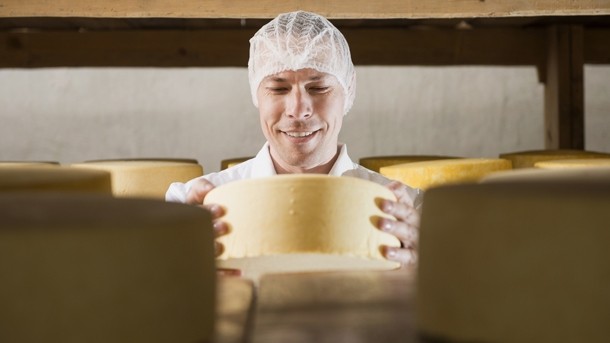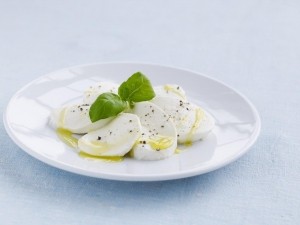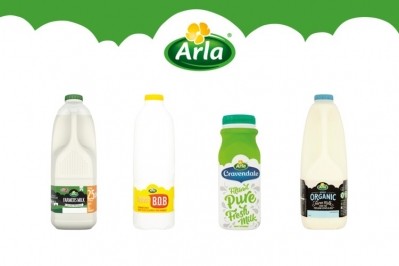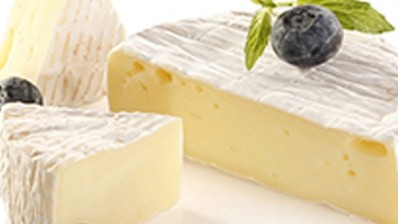Dairy innovation: milk price rises put cheese yields in focus

- Why cheese yields matter
- Improving yields through ingredients
- AFI’s whey protein-based ingredients
- Using starch as an alternative
Boosting yield to drive innovation in dairy is nothing new. But, as raw milk prices have increased over the past year, the importance of maximising returns has grown significantly.
According to the latest published figures from the EU’s Milk Market Observatory, the average rise in raw milk prices across Member States was 21% higher in April 2017 compared with April 2016.
While that headline disguises a wide variation between national markets – prices increased by 17% in the UK, but were up 30% in Germany, 31% in Ireland, and 39% in Belgium – it is clear there is more incentive than ever to look for ways to eke out more value from every precious litre.
And it’s not just about optimising the litres of raw milk produced per cow. Increasingly, dairy processors are looking for ways to maximise the number of kilos of cheese per litre through the use of novel ingredients.
Why cheese yields matter (return to top)
Some cheese producers face greater cost pressures than others, yet cheese yields are a focus for everyone, argues Claus Bukbjerg Andersen, category manager for cheese with Arla Foods Ingredients (AFI), which offers a range of specialised whey-based ingredients.
“It’s all about production economy,” he explains. “If you ask cheese producers, they will always say they are looking to improve the production economy so they can produce cheese at a lower cost per kilo.”
Cheese yields can be impacted by a variety of process parameters and ‘smart’ ingredients. They can also be affected by what happens on the farm, which can have a knock-on effect on the balance of components within the raw milk.
In a recent research initiative from Scotland, for example, SAC Consulting – part of Scotland’s Rural College (SRUC) – worked with dairy co-operative First Milk and SRUC’s Dairy Research and Innovation Centre to investigate why there was a lower cheese yield from First Milk’s Campbeltown creamery compared with its other creameries.
The Campbeltown Milk Quality Improvement Project developed an understanding of the relationship between milk quality and cheese yield and identified changes to farm practices to optimise milk quality.
This led to a second project on the feeding of whey to dairy cows, which reduced farmer feed costs, improved milk quality and cheese yield, as well as reducing the creamery whey haulage costs, since the whey could be sourced locally.
Improving yields through ingredients (return to top)
When it comes to the actual cheese-making process, there are a range of ingredient-based approaches that can help manufacturers get more bang for their buck.
One established approach is to use enzymes to adjust the retention of different components within the cheese. Chr Hansen is a leading proponent of this approach, thanks in part to its Yieldmax enzyme.
Yieldmax is a phospholipase A1 enzyme that breaks down phospholipids into lysophospholipids, which promote greater fat retention during the cutting, stirring and stretching steps of cheese production. They also enhance moisture binding.
According to Sascha Roervig, global marketing manager for cheese, Yieldmax was originally launched back in 2005 as a way of boosting yield in mozzarella production.
Since then, it has been discovered that Yieldmax is also able to provide significant benefits in other cheese types than mozzarella, she claims.
“Today, Yieldmax is being used for yield purposes across cheese types such as cheddar, Swiss, and queso fresco cheese, and subsequent trials have revealed that it improves flavour in ripened cheese types such as cheddar and Emmenthaler/Swiss, as well as improved texture in the continental and queso fresco segment,” Roervig adds.
An average yield improvement of 1.8% can be expected, ranging between 1.5%–3.5%, depending on the type of cheese.
“The highest yield effects (greater than 3%) are observed in mozzarella cheese – and in cheese types with higher milk fat percentages – but even smaller yield increases are still considered of high value for all dairy producers across regions and countries due to high raw milk prices, and improving inputs/cost benefits,” Roervig explains.
She also advises combining different enzymes to achieve desirable sensory characteristics in the cheese. For example, Yieldmax forms a softer, moister curd through increased moisture and fat retention.
In contrast, Chr Hansen’s Chy-Max M enzyme increases casein retention, which results in a firmer curd. “[Combining the two] optimises texture and yield across cheese types,” Roervig adds.
AFI’s protein-based ingredients (return to top)
AFI, meanwhile, is well-known for its Nutrilac family of whey protein-based ingredients for specialised dairy applications. For instance, one version enables dairy producers to incorporate acid whey (the main by-product generated by the traditional process for manufacturing Greek yogurt) into a range of value-added products, such as drinks, dips and desserts.
But when it comes to maximising the yield of various kinds of cheese, it’s another member of the Nutrilac family – Nutrilac CH-4560 – that enables manufacturers to increase their yield by up to 18% in both reduced-fat and full-fat cheeses, leading to a reduction in raw material costs of up to 4%, according to AFI.
The yield improvement is largely possible thanks to the water-binding capacity of the CH-4560 protein particles, which is significantly higher than that of regular casein. This enables the water content of the overall cheese to be up to 3% higher without impacting on the texture.
Crucially, taking this approach has no negative impact on shelf-life, according to Andersen.
“We first introduced the product in 2004, and we’ve gone through two rounds of development since then. Both the quality and efficiency has been improved,” he says.
While a major part of the difference between the 18% yield improvement and the relatively modest 4% reduction in raw material cost results from the added cost of incorporating CH-4560, Andersen notes there are other, indirect overheads that must be included in the cost/benefit equation.
“For example, if you have 18% more cheese you need 18% more salt and rennet and maybe more labour costs too.”
In these days of clean-labels and shrinking ingredients lists, it’s easy to see the appeal of using dairy-based ingredients to boost cheese yields. However, other ingredients can also offer a solution.
Using starch as an alternative (return to top)
In the US, Ingredion recently launched its Precisa 680 starch, which can be added to milk at the onset of the manufacturing process to increase yield by 8 to 10%. Precisa 680 starch can be used in cheese products, cream cheese-type products and flavoured fresh cheeses, as well as low-fat cheeses, according to the company. The modified food starch, which is not yet available in Europe, is based on waxy maize and is non-genetically modified.
“Manufacturers continue to look for ways to make high quality products for less, without compromising the valuable whey stream or familiar textures,” says Luc Bertram, Ingredion’s vice president of global wholesome and texture springboards.
“This innovative solution is easy to incorporate into the traditional cheese manufacturing process and does not require any capital investment.”
Ingredion says Precisa 680 is unusual among starch-based ingredients because more than 90% of the starch is retained in the cheese curd – compared with a more typical 50% – maximising yield without compromising the whey stream.
Please click here to sign-up for our free monthly Food Ingredients, Health & Nutrition (FIHN) newsletter



















